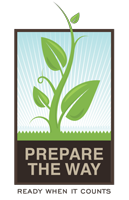Step 1
Learn to get water despite the circumstances. In extreme crisis, like being snowed in, you can farm your own household for water. The water heater, ice in the freezer, and in extreme cases toilet tanks (not bowls) can yield water. Moving beyond very short term water reserves, you have to think like a backwoods camper. Where is the water and how to I harvest it, contain, carry it, and keep it coming? Do you have a well? Is a lake or stream close by? Does it rain or snow frequently enough to harvest water from the roof, ground, in cisterns or catching containers?
Step 2
Calculate how much water to store up now considering your “How many for how long?” question. Factor in 30 gallons/day per person to cover drinking, light bathing, cooking and washing dishes.
Step 3
Consider your storage space. Do you have a space in closets, your climate-controlled garage, basement, or cellar to store emergency water reserves? What’s the most efficient container to store water in? How much money can you spend on that priority over the coming months to build an ample reserve?
Step 4
Create 3 or 4 back up systems for purifying any water you get. Get pointers on water filters, purification tablets, and manual methods of cleaning up your water.
Step 5
Determine sanitation needs and plot out a space to “do the dirty.” Keeping human waster well away from water systems is as critical as keeping your blow dryer from falling into your bath water with you!
Step 6
Add to your knowledge plans for very short term to mid-long term water collection. Also understand what it takes to purifying water from the slowest to faster option and cheapest to costliest. Our mantra is to create as many options for yourself as possible.
Act Now:
- See our store for water containers, filters, and purifying agents. Tip: Safely start your storage with 55 gallons of water.
- Come to Really Ready Weekend to develop your plan and go home with equipment you know will work.

